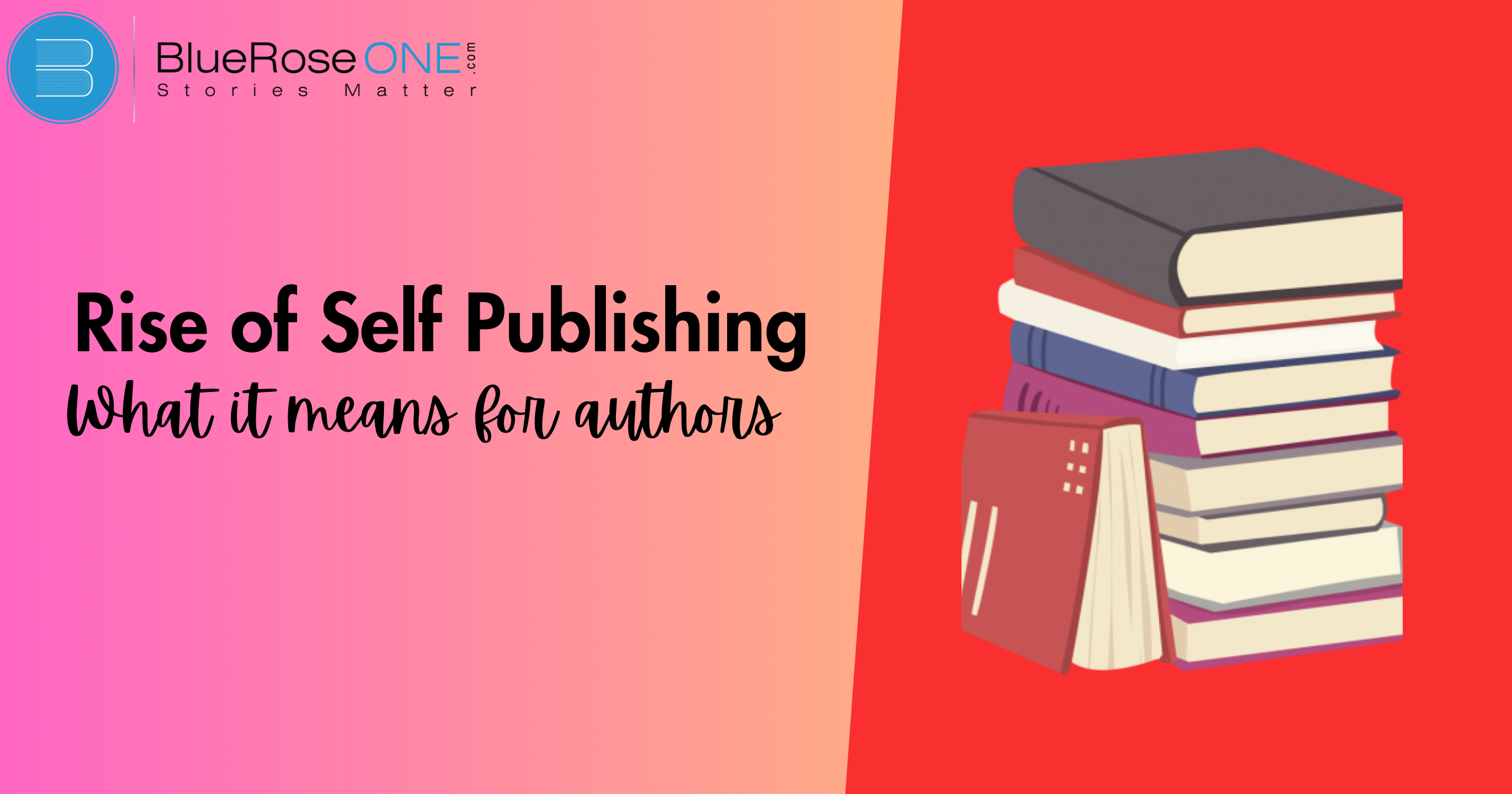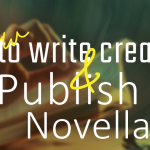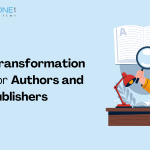Introduction
In the ever-evolving landscape of the publishing industry, self-publishing has emerged as a powerful tool for authors to share their stories with the world. Unlike the traditional publishing model, which often involves navigating through agents and publishing houses, self-publishing allows writers to take control of the entire publishing process themselves.
The Evolution of Self-Publishing
Self-publishing isn’t a new concept. Throughout history, authors have self-published their works when traditional publishing avenues were closed to them. However, with the rise of digital technology, self-publishing has become more accessible and efficient than ever before.
Technological Advancements
The self-publishing sector has seen a radical transformation with the introduction of digital platforms and print-on-demand services. Authors can now easily reach a global audience and publish their books with little up-front expenditure.
You may also like: The Importance of Professional Editing in Self-Publishing
Advantages of Self-Publishing
Self-publishing offers numerous benefits to authors, including:
Creative Control
One of the significant advantages of self-publishing is the unparalleled creative control it offers to authors. Unlike traditional publishing, where decisions may be influenced by various stakeholders, self-publishing empowers writers to retain full autonomy over every aspect of their work, from cover design to marketing strategies.
This level of control allows authors to stay true to their vision, experiment with different formats, and connect directly with their audience. Whether it’s exploring niche topics or pushing artistic boundaries, self-publishing provides a platform for authors to unleash their creativity without compromise.
Time Efficiency
Time efficiency is by far the most beneficial quality when it comes to self-publishing. Authors can take charge of their own schedules through self-publishing, as opposed to traditional publishing avenues that include drawn-out submission procedures and waiting periods.
Manuscripts can become polished novels that are available to people anywhere with just a click of a button. From the time they draft to the time they publish, authors set their own pace, maximizing output and avoiding needless delays.
In addition to accelerating the idea-to-completion process, this streamlined method enables prompt reactions to market changes and requests. Time efficiency is the secret to success in the fast-paced business of publishing.
you mau also like: Top 10 Best Biographies of All Time
Higher Royalties
One of the foremost advantages of self-publishing is the potential for higher royalties. Unlike traditional publishing routes where authors typically receive a small percentage of book sales, self-published authors often retain a larger portion of the profits.
With control over pricing and distribution, self-publishers can maximize their earnings per sale. This financial incentive not only rewards the author’s hard work but also provides greater flexibility in investing back into their writing career.
Higher royalties empower authors to pursue their creative endeavors with more independence and confidence, making self-publishing an attractive option for many aspiring writers.
Challenges of Self-Publishing
While self-publishing offers many advantages, it also comes with its own set of challenges, including:
Quality Control
Dealing with the maze of quality control in the context of self-publishing is a difficult task. Carefully examining every detail of your book is necessary to make sure it satisfies industry standards.
Every step needs to be carefully considered, from editing for grammatical accuracy to formatting for reading on different devices. Furthermore, finding trustworthy experts to complete these jobs might be difficult. Authors frequently have to walk a tightrope between maintaining quality assurance and budgetary limits.
Nevertheless, overcoming these obstacles eventually enables self-publishers to produce polished works that compete with traditional publishing, signifying a victory in the independent writing path.
You may also like: Insights from Bestselling Authors: The Art of Storytelling
Marketing and Distribution
Handling the complexities of marketing and distribution is a daunting undertaking in the self-publishing world. Independent authors, in contrast to established publishing houses, have to juggle many hats in order to make sure their work is seen by the right people.
It takes effort, imagination, and sometimes money to develop a successful marketing plan. To develop a devoted following, writers need to actively interact with potential readers through social media platforms and online presence building.
Distribution is still a challenge, though, even with a strong marketing strategy. Because it can be difficult to get placements in physical stores, online retailers like Amazon are an essential way to reach readers all over the world. Strategic persistence can lead to success in the self-publishing space, even in the face of obstacles.
Stigma
One of the biggest obstacles authors encounter when self-publishing is the stigma associated with the process. There is a persistent belief that self-published publications are not as credible or of higher quality than officially published books, even in spite of their increasing popularity and success stories.
Aspiring authors may be discouraged from following their goals and telling the world about their experiences because of this stigma. But it’s important to understand that self-publishing gives authors unheard-of flexibility and control over their work and lets them interact directly with readers. It takes tenacity, fortitude, and a firm belief in the worth of one’s own voice to overcome the stigma.
Tools and Platforms for Self-Publishing
Fortunately, there are numerous tools and platforms available to help authors navigate the self-publishing process, including:
Amazon Kindle Direct Publishing
Amazon Kindle Direct Publishing (KDP) stands out as a revolutionary tool for aspiring authors in the digital age. With KDP, writers can effortlessly publish their work and reach a global audience without the need for a traditional publishing house.
This platform offers a user-friendly interface, allowing authors to maintain creative control over their content while tapping into Amazon’s vast market reach. From novels to non-fiction, KDP accommodates a wide range of genres, empowering writers to share their stories with readers worldwide.
With its seamless publishing process and extensive distribution network, Amazon KDP remains an indispensable tool for self-publishing success.
BlueRose Publishers
In the bustling world of self-publishing, where authors seek platforms to share their stories, BlueRose emerges as a beacon of innovation. With its user-friendly interface and versatile features, BlueRose empowers writers to bring their manuscripts to life with ease.
From formatting tools to distribution options, this platform caters to the needs of both seasoned authors and newcomers alike. With BlueRose, creators can bypass traditional publishing gatekeepers and connect directly with their audience, fostering a community of literary enthusiasts. Aspiring authors, take note: itBlueRose is your gateway to self-publishing success.
You may also like: Strategies for Effective Book Recommendations in Publishing
Draft2Digital
Draft2Digital stands as a beacon of efficiency and simplicity in the realm of self-publishing platforms. Boasting an intuitive interface and a plethora of useful features, it empowers authors to effortlessly distribute their literary creations to a wide array of online retailers.
From formatting assistance to seamless distribution across multiple channels including Amazon, Apple Books, and Kobo, Draft2Digital streamlines the entire publishing process.
ts commitment to transparency and author-centric approach makes it a go-to choice for writers looking to navigate the complex landscape of self-publishing with ease and confidence. With Draft2Digital, authors can focus on what truly matters: crafting captivating stories.
Success Stories in Self-Publishing
Despite the challenges, many self-published authors have achieved great success, including:
Line of Thoughts by Dr. Savita mohurle
In “Success Stories in Self-Publishing,” Dr. Savita Mohurle explores the intricate journey of self-publishing, unraveling inspiring tales of triumph. With a keen eye for detail and a compassionate understanding of the challenges authors face, Dr. Mohurle delves into the diverse experiences that make up the fabric of self-publishing success.
Through her book “Line of Thoughts,” she offers a roadmap for aspiring authors navigating the complex world of independent publishing. Each anecdote shared serves as a beacon of hope, guiding writers towards their own path of literary accomplishment.
BlueRose Publishers proudly presents this insightful narrative, celebrating the resilience and creativity of self-published authors.
You may also like: Everything to Know About Popular Romance Books in 2023
A Mystery Story by Farzana Hussain
In success stories in self-publishing, we delve into the intriguing world of independent authors, highlighting Farzana Hussain’s captivating mystery tale “A Mystery Story”. With her gripping narrative and masterful storytelling, Hussain takes readers on a thrilling journey filled with suspense and intrigue.
Through her self-publishing journey, she has not only crafted an enthralling story but also demonstrated the power of determination and creativity in the publishing world.
BlueRose Publishers, the platform behind Hussain’s literary success, provides aspiring authors with the tools and support needed to bring their stories to life, fostering a community of independent voices in the literary landscape.
Guide to start a modeling career by Jatin Kumar Khirbat
Embarking on a modeling career can be an exciting journey, filled with challenges and opportunities. In ‘Guide to Start a Modeling Career‘ by Jatin Kumar Khirba, aspiring models are provided with invaluable insights and practical advice to navigate this competitive industry.
From building a standout portfolio to mastering the art of casting calls, Khirba’s book serves as a comprehensive roadmap for success. BlueRose Publishers, the platform behind this essential guide, ensures that aspiring models receive expert guidance and support as they embark on their path to success in the world of modeling.”
Tips for Success in Self-Publishing
To succeed in self-publishing, authors should:
Professional Editing
Professional editing is the foundation of tone-publishing success. Beyond bare proofreading, a professed editor provides inestimable perceptivity, icing your handwriting shines with clarity and consonance.
They upgrade the narrative inflow, polish prose, and strain plot holes, elevating your work to professional norms. Their keen eye detects inconsistencies, factual crimes, and grammatical nuances, conserving the integrity of your story.
Uniting with an editor is not just about fixing miscalculations; it’s about sculpturing your vision into a masterpiece that captivates compendiums . So, invest in professional editing services, because in the realm of tone-publishing, scrupulous editing is the key to standing out amidst the erudite crowd.
Strong Cover Design
The saying “don’t judge a book by its cover” isn’t more accurate when it comes to self-publishing. A book’s success is largely dependent on its cover design, which acts as a visual representation of the book to prospective buyers.
It is essential to devote time and resources to creating a captivating cover. It should capture the spirit of the book and entice readers to turn the pages. To make an impact, every component—from clever typography to captivating imagery—must work together harmoniously.
Keep in mind that a compelling cover can frequently spell the difference between success and obscurity in the busy world of books.
You may also like: What is a Motif in Literature? Definition, Meaning and Examples
Effective Marketing Strategies
Successful self-publishing requires a solid understanding of effective marketing strategies. To begin with, it’s important to know who your target audience is. Make sure your marketing campaigns speak to their interests and preferences. Second, use social media sites to generate interest in your work.
Use interesting material and interactive posts to interact with potential readers. Moreover, use email marketing to cultivate relationships with your audience and inform them about new releases and exclusive offers.
Finally, remember the importance of networking in the literary community. Developing relationships with other writers and influential people can greatly expand your audience and increase the visibility of your book.
Conclusion
Self-publishing has democratized the publishing industry, allowing authors of all backgrounds and genres to share their stories with the world. While it presents its own set of challenges, self-publishing offers unprecedented opportunities for creative expression and financial independence.
Frequently Asked Questions
While self-publishing is suitable for most genres, some genres, such as literary fiction, may still benefit from the support of a traditional publisher.
The cost of self-publishing varies depending on factors such as editing, cover design, and marketing. However, it is possible to self-publish a book for little to no upfront cost using platforms like Amazon KDP.
Yes, many self-published books have achieved great success, reaching bestseller lists and attracting the attention of traditional publishers and Hollywood producers.
BlueRose Publishers offers distribution services to bookstores and libraries, allowing self-published authors to reach a wider audience through brick-and-mortar retailers.
Yes, many authors have built successful careers through self-publishing, earning six-figure incomes and gaining international recognition for their work.
















